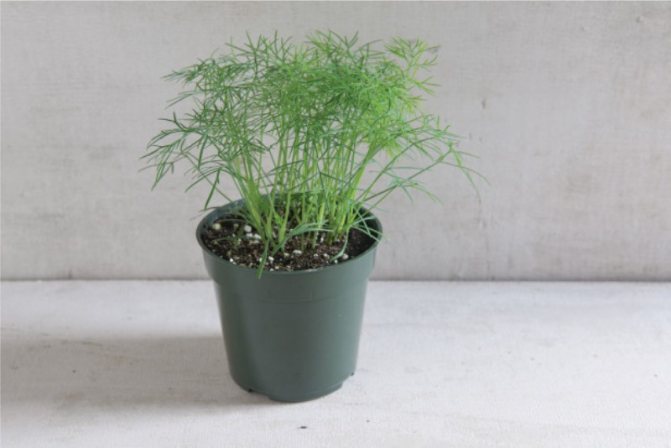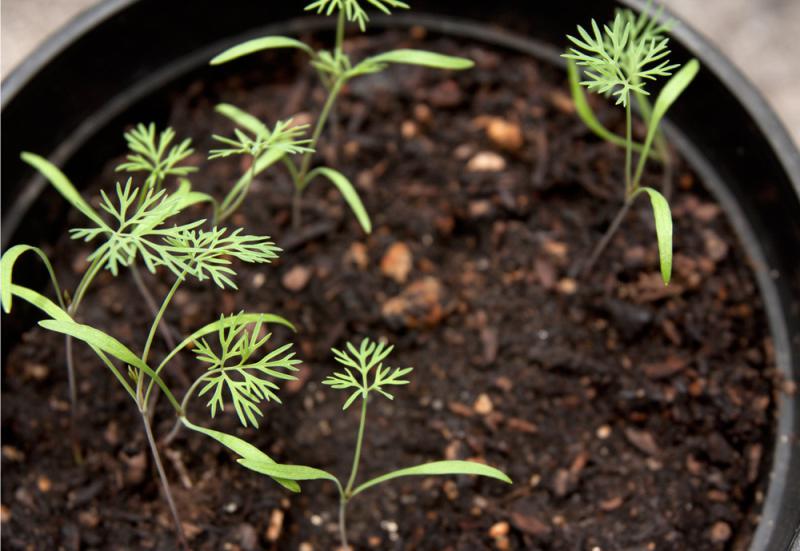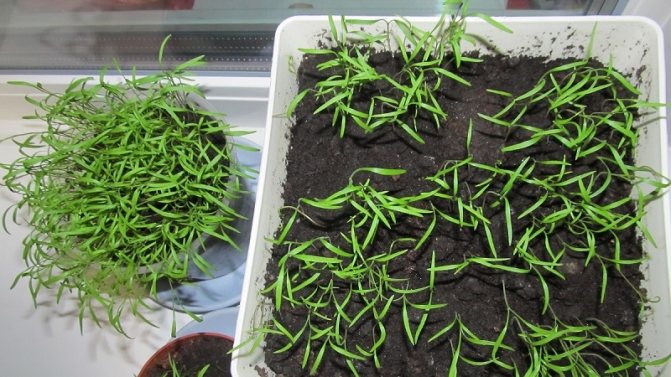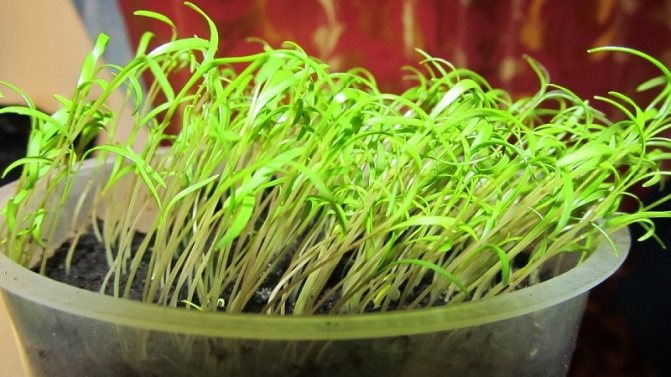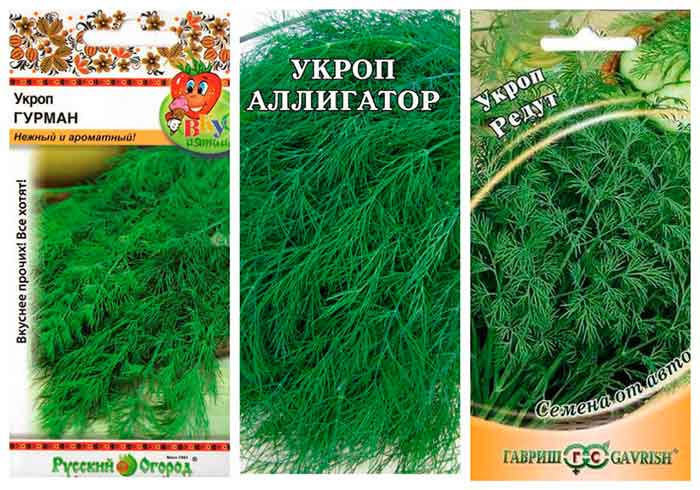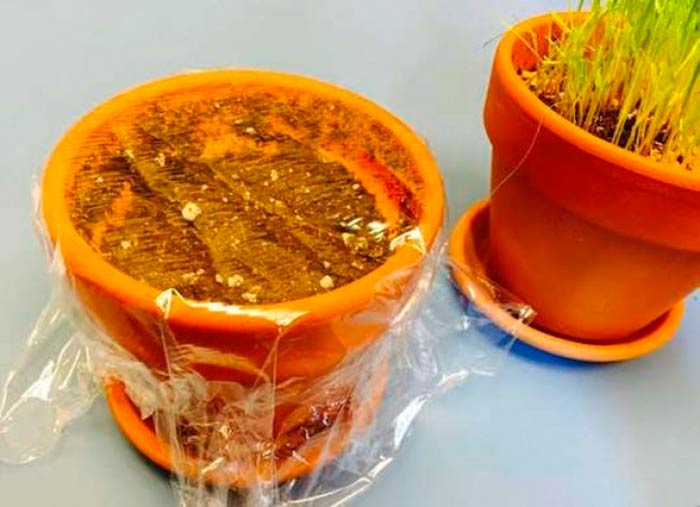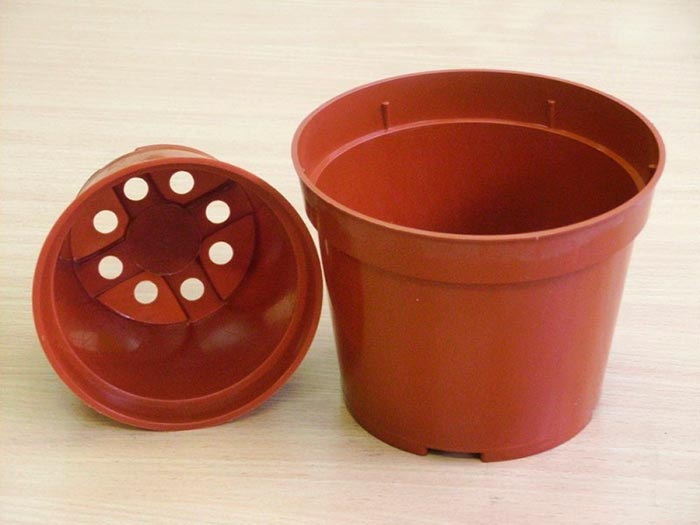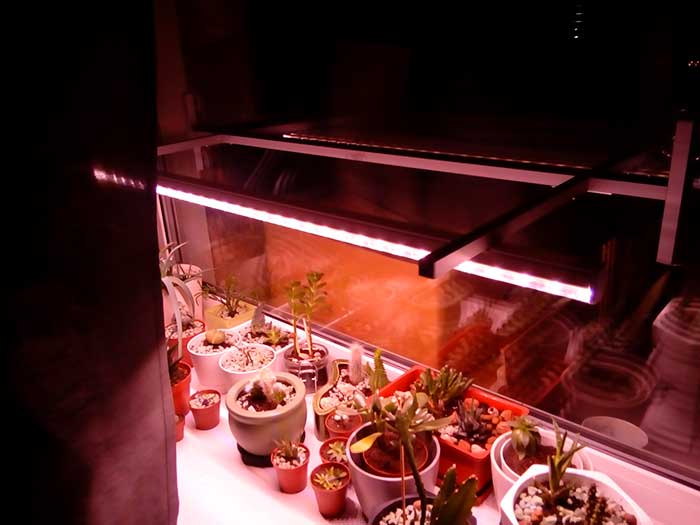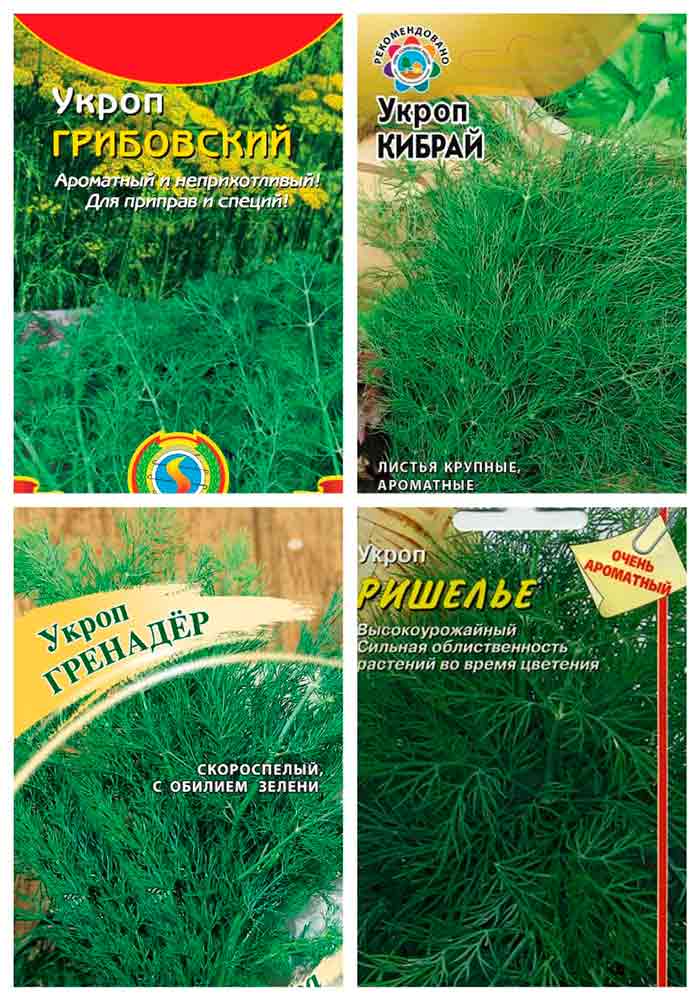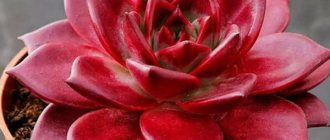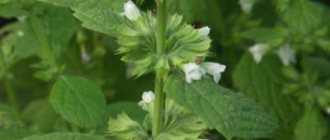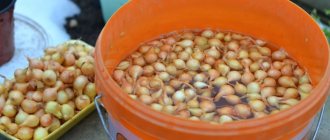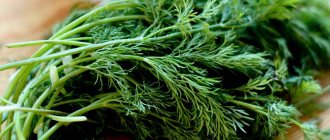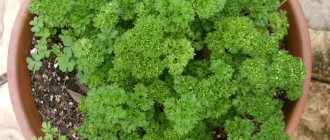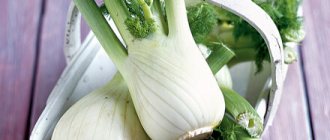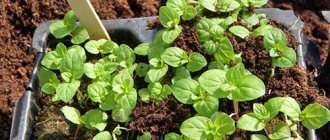Dill on the windowsill is a great opportunity to have fresh juicy greens on the table all year round, without having a full-fledged vegetable garden. This culture is unpretentious in care, therefore it is suitable even for beginners in agricultural business. In the article, we will take a closer look at how to sow dill from seeds on the windowsill, tell you about the best varieties, when dill springs up, and how much it grows.
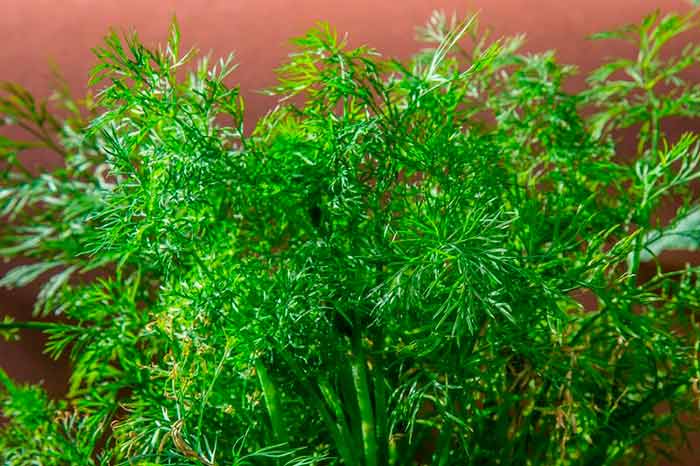
Dill requirements for soil, light, moisture
If you are going to grow dill in an apartment, you must immediately understand that this will not be an easy task. It is in the garden that it often grows self-seeding and practically without care. There are no such conditions at home.
Firstly, this plant does not like heat, and a temperature above 20 ° C in an apartment is bad for it. And in the first week, the seedlings should be cool. Secondly, during winter cultivation, heating batteries, which dry out the air, will greatly interfere, and it will need to be artificially humidified. It is easier with the soil: the "bed" will simply need to be watered almost every day. Thirdly, dill needs a lot of light. Daylight hours with the help of various lamps will need to be extended to 14-15 hours.
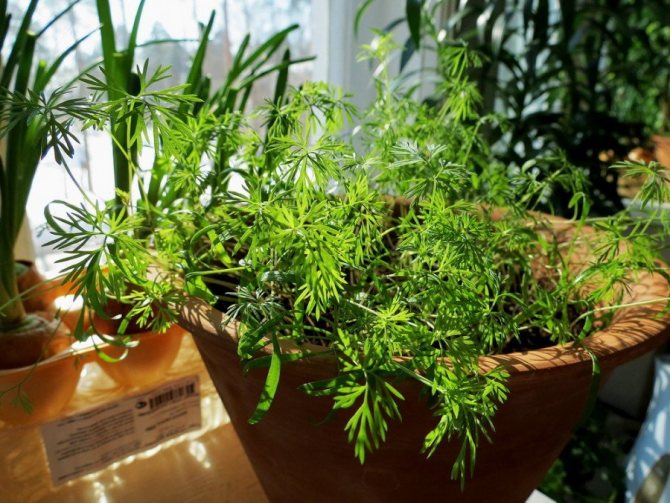

Dill needs a lot of light to grow
These are probably the biggest problems, since you can simply buy good fertile soil for the dill box at the store: it will be better than trying to mix the soil with ingredients that are unlikely to be at hand.
Crop care, albeit not very difficult, will be required daily.
Harvesting
To achieve good results, it is more correct to cut the dill greens when the plants grow to 20-25 cm. It is best to first remove the lower leaves by cutting them with scissors. After that, it is advisable to water the dill and sprinkle it from a spray bottle. In the future, the leaves on the stem will begin to grow again.
Growing dill is a fun activity, although you will have to work hard to create the necessary conditions for it. But it's worth it, because there will be an opportunity to admire a beautiful plant and add it to dishes, picking it from a mini-garden.
Dill care
When dill is grown on a balcony in the warm season, caring for it is not much different from caring for garden dill: this is periodic watering, loosening the soil, and rare top dressing. And with the temperature, and with lighting from spring to autumn, it is not necessary to be particularly wise. Only on a glassed-in balcony can it be very hot in summer, it will have to be watered and ventilated more often. When grown in an apartment on a windowsill in winter, the situation is more complicated.
Dill should be watered often, starting from germination and ending with the last harvest. At first, it is better to replace watering with spraying from a spray bottle. Water should be at normal room temperature. Drying out of the soil is unacceptable, waterlogging is also unacceptable. The frequency of watering is determined based on the conditions; it happens that watering is required daily.
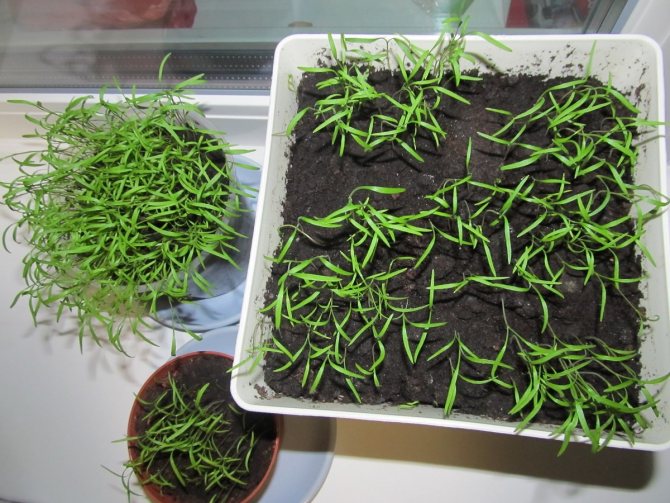

From time to time, thickets need to be thinned: often dill grows too well
Homemade dill should be fed 1-2 times a month, depending on the initial fertility of the soil... It is hardly worth breeding a mullein at home, but organic fertilizers are also on sale: Bioactive, Organic-balance, etc.
In principle, you can use the usual Azofoska, but many gardeners do not really like to use mineral fertilizers for greens.
Backlighting for dill in winter is required: daylight hours should not be less than 12 hours. Intense light is required, and the hotter it is in the apartment, the higher the illumination should be... Phyto-lamps or cold-glow fluorescent lamps are used, located at a height of half a meter in relation to the plants.
For even use of sunlight, the boxes are periodically turned on different sides to the glass.
Video: homemade dill care
Seed preparation
So that only high-quality seeds come across for sowing and germinate faster, it is necessary to soak them in warm water. They are placed in a cloth and soaked for about a day, changing the water after 12 hours.
Seeds can be treated with a weak solution of potassium permanganate, holding for 3 hours.
It is advisable to remove those grains that have surfaced, since they are considered unsuitable for sowing, and those immersed in the bottom of the dishes must be dried a little on paper.
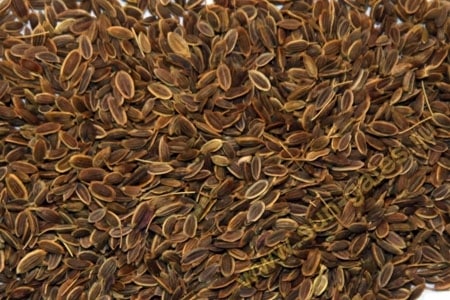

Features of growing bushy dill at home
Bushy (bushy) dill is an interesting variety that grows not in separate tall stems, but in the form of bushes: from the ground itself, the plants begin to branch strongly. Many of the varieties of bush dill are capable of growing in the garden up to one and a half meters in height, or even higher. In the axils of the leaves of such dill, additional shoots are formed, as a result of which the yield is greatly increased. Such dill blooms very late, which distinguishes it favorably in cases where seeds are not needed.
Find out how to grow rosemary on a windowsill in our article - Rosemary: how to make growing a curiosity in an apartment easy and quick
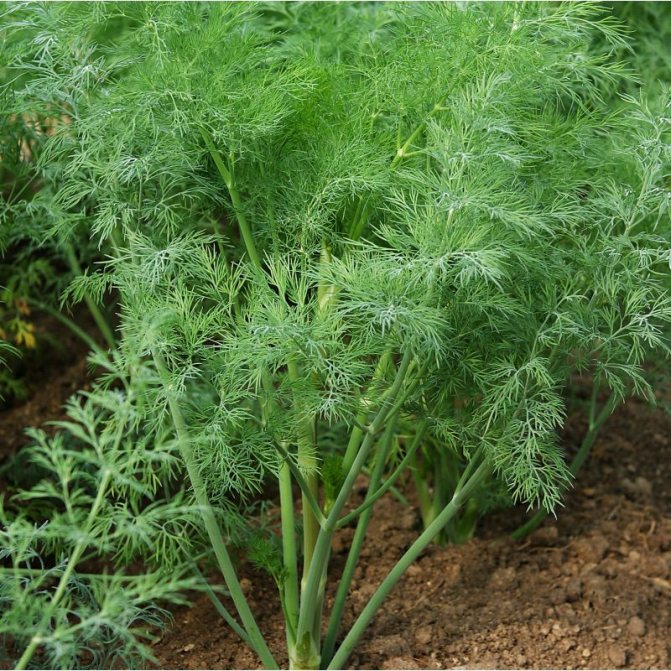

Bush dill gives much more greenery
Of course, it is difficult to grow such dill in an apartment to a height of 1.5 m, but it is quite possible to plant it in order to get about 150 g of greens from each bush. But we must try to keep the temperature below 20 ° C. Such dill also performs a decorative function: it looks more impressive than usual. Moreover, in the case of bush dill, home cultivation is more reliable. The fact is that the most productive, the best varieties (Salute, Gourmet, Russian size) are late-ripening, in the open field they do not have time to give a full harvest, while the apartment is constantly warm..
Planting bush dill and caring for it do not differ from those in the case of conventional varieties, only you need to plant it freer. Ideally, you need to take an individual pot for each plant. Such dill requires a little more light only due to the fact that it blocks itself from it. It also has to be fed a little more abundantly. The greens are cut off selectively, while trying to thin out the bush, to create beautifully shaped plants from it.
Variety selection
Breeders have bred many varieties of dill. They differ in the height of the stems, the presence of splendor of greenery, and the timing of flowering and seed ripening. To get fresh greens as long as possible, it is better to plant varieties with different ripening periods.
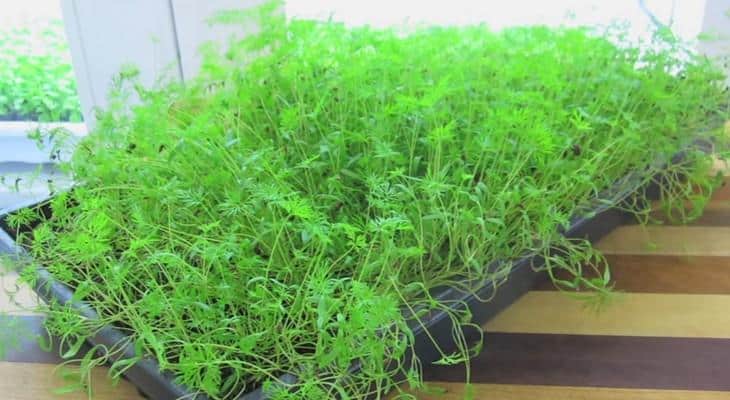

There are plants from which, after 38 days, you can cut off the green mass. After 5-6 leaves grow on the stem, the dill will begin to bloom. Just by this time, a mid-ripening variety will grow up.
Early maturing varieties
Among the varieties of dill with an early ripening period stand out:
- Further. Within a month, dill grows, in which rosettes are 25 cm long. The density of the leaves is considered average. They have a deep green color, covered with a waxy coating. This variety has a strong immunity to diseases and pests.
- Gribovsky. Can be sown in spring, in the middle of summer, with supplementary lighting in winter. It grows fragrant leaves throughout the month.
- Aurora.It is considered a new variety that gives early greens. Already on the 25th day, you can use its juicy leaves, characterized by a spicy smell and richness. Plants develop well, rarely get sick and are not damaged by pests.
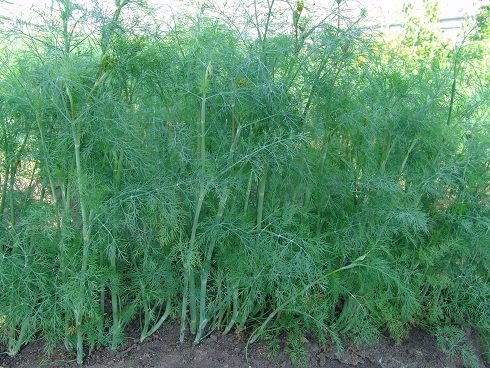

Mid-season varieties
In varieties of dill, which are classified as mid-season, the growing season is lengthened by a week, so they differ from the earlier ones in larger foliage.
Among the mid-season varieties of dill, the following are known:
- Bushy. A lot of greenery grows, they begin to collect it after 70 days. The first cut is made from below. You can cut leaves from one plant several times. He has a lot of juicy, aromatic greenery.
- Lesnogorsky. Recommended for large and aromatic leaves. Even when the umbrellas appear, you can continue cutting the leaves. The variety is resistant to diseases and pests.
- Abundant dill. Grown to produce lush greenery. It got its name for a reason: the leaves grow in large numbers, fragrant and juicy. It can be sown several times a year.
See also
The best recipes for harvesting dill for the winter, which one is better for preservation, how to preserve the aromaRead
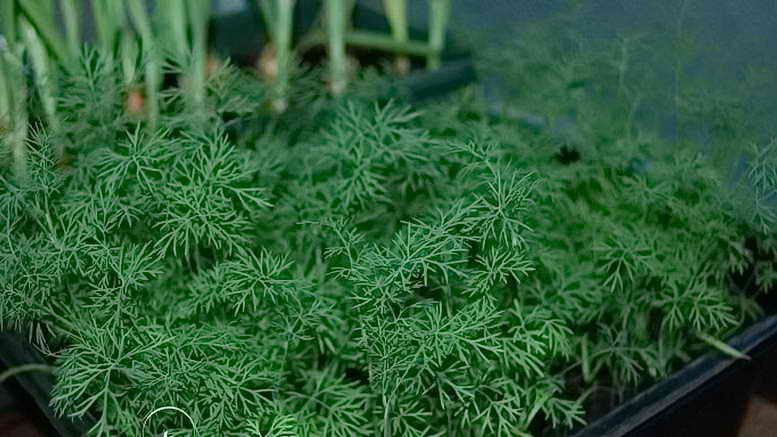

Late-ripening varieties
These plants are distinguished by the fact that delicate greens remain on them for a long time. They sometimes do not have time to ripen to the end.
Among the well-known late varieties:
- Alligator. It is prized for its long lasting lush greenery. Umbrellas with flowers form late in it, so greens can be harvested almost the entire summer season. The leaves are bright green, covered with a waxy bloom.
- Kibray. Its leaves are wide, green with a slight yellowness. Plaque is almost invisible. The rosettes are large, grow to a height of 40 cm.
- Dill. Popular Dutch variety. Differs in unpretentiousness, enduring different conditions. Gives a lot of fragrant greenery. Cutting can be done for a long time. It grows up to 1.5 meters in height.


Why doesn't dill grow at home?
If all requirements are met, dill will grow. It is advisable to plant late-ripening varieties at home: there will be more sense from them, they stretch less and later give inflorescences. Problems with dill at home can arise due to too high temperatures (especially at night), lack of light (in the morning and in the evening, backlighting is required) and poor-quality soil (you should not buy the cheapest one). You should not save on top dressing either: the best option is special dressings for greens, they are also on sale.
Growing dill on a windowsill is both a hobby and vitamins. The lesson is interesting, not very difficult, but it requires daily “gardening”.
Sowing
It is good if garden soil is prepared in advance for planting seeds. If it doesn't work out, you can buy soil for growing flowers. The main condition for obtaining friendly seedlings is the looseness of the soil, therefore, before sowing, you can add a little sand and vermicompost to the ground.
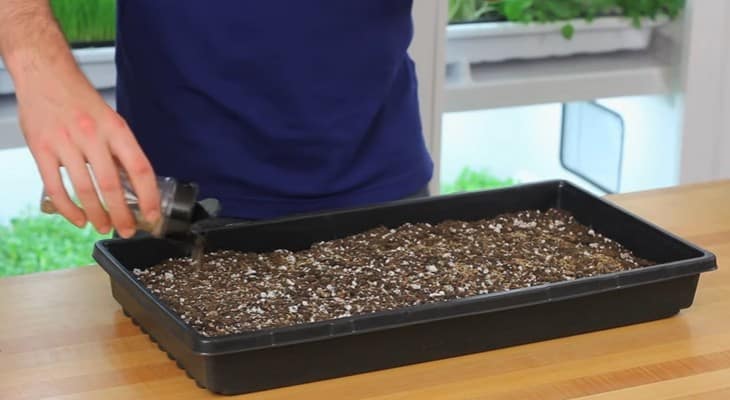

After the container is filled with soil, it needs to be moistened a little more. It is better to do this with a spray bottle. Then make small grooves, the depth of which should correspond to 1.5 cm. It is also recommended to sprinkle them with water. Plant seeds, cover slightly with earth. Cover the container with plastic wrap and place in a warm place.
For planting seeds, the temperature must be at least 18 ° C. Pre-soaked specimens germinate in about 7-10 days.
When shoots appear, it is recommended to put the container on the windowsill. So that the dill is not thickened, it is necessary to pull out the excess plants at a distance of 3 cm.
Ready fixtures
For growing greenery on the windowsill, special devices are produced, the so-called "smart pots", operating on the principle of hydro- and aeroponics. Some of them are quite complex.For example, the Aerogarden bed based on aeroponics creates fog, the parameters of which are controlled by a microprocessor. The roots of plants in a nutritious fog receive everything they need, and from above the bed is illuminated by a phytolamp. It is a fully automatic system that cares for plants using computer calculations.
The Plantme works in a similar way, except that hydroponics is used instead of aeroponics. Plant roots are in solution with an ideal ratio of macro- and microelements, so dill grows quickly without watering and fertilizing. In order to begin to feast on fragrant herbs in 3-4 weeks, it is enough to pour the solution into a container, pour seeds into the container and turn on the plug.


